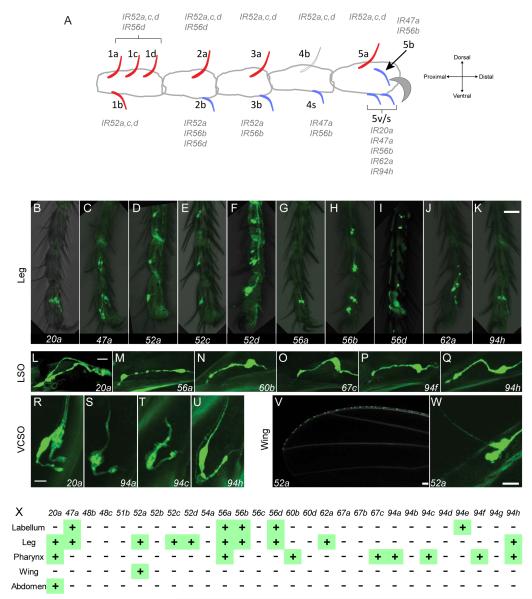Figure 2.
IR20a clade members are expressed in the legs, pharynx and wing margin.
(A) Spatially stereotyped taste sensilla on the female foreleg and the drivers expressed in them. Blue sensilla respond to food-related tastants, such as sugars, salt and bitter compounds; red sensilla do not (Ling et al., 2014; Meunier et al., 2000). Sensillum 4b is not colored due to variation in its response to sugars. Sensilla 5v and 5s are morphologically similar and adjacent to each other; as the present analysis does not provide sufficient resolution to distinguish these two sensilla, we have assigned the drivers expressed in either one to “5v/s”. Male forelegs contain additional sensilla close to 1a-d, 2a, 3a, and 4b. Midlegs and hindlegs are sexually monomorphic.
(B-K) Drivers that label cells in taste sensilla in legs.
(L-U) Drivers that label cells in the LSO 7th sensillum (L-Q) and VCSO (R-U) along the pharynx (Gendre et al., 2004).
(V-W) IR52a-GAL4 labels cells on the wing margin.
(X) Summary of expression in taste organs. Not shown are 7 putative pseudogenes. Scale bars represent 30 μm in B-K, 10 μm in L-Q, 10 μm in R-U, 50 μm in V, and 20 μm in W. See also Figure S2.

